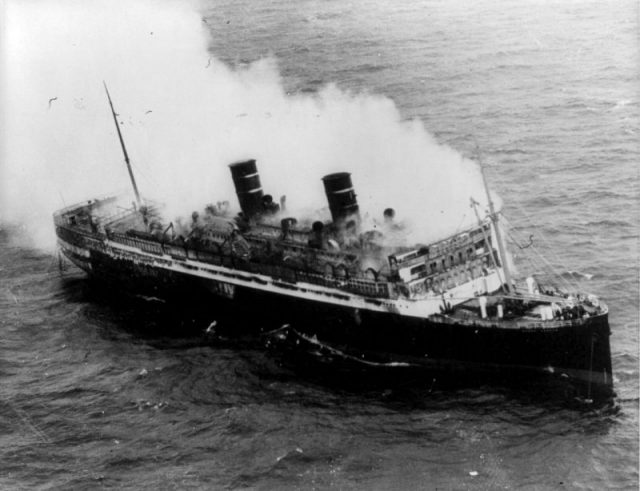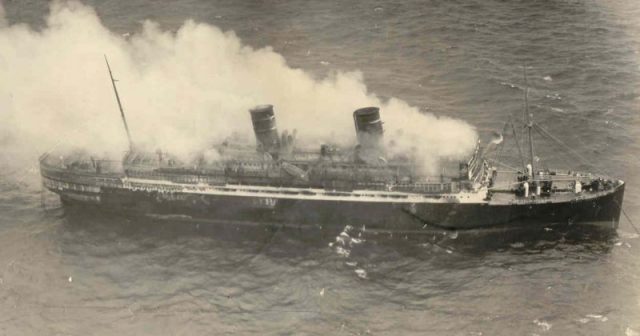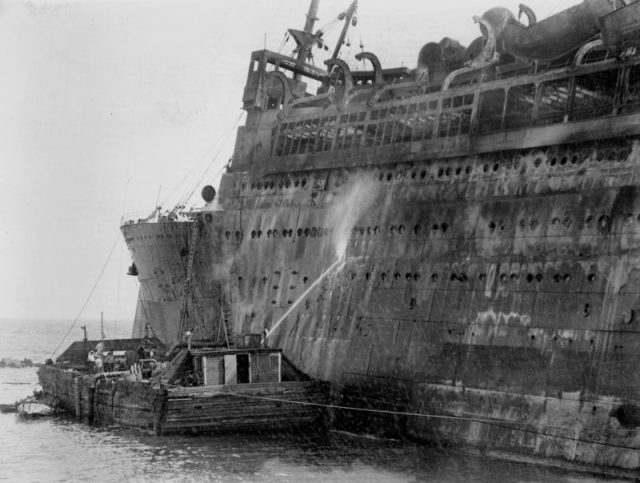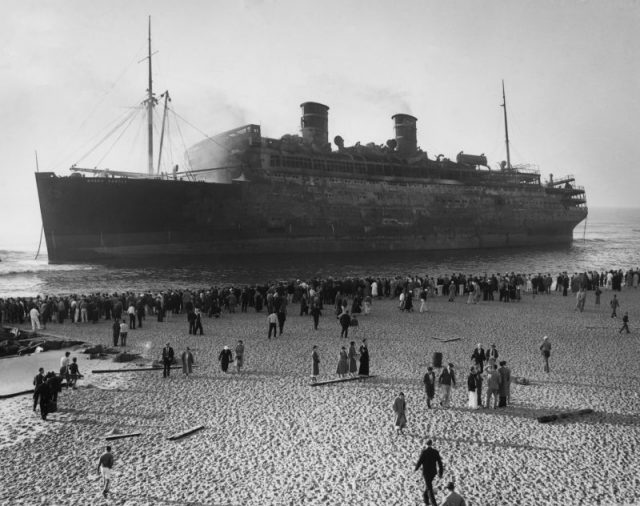In the early 1930s, at the height of Prohibition in the United States, nearby Cuba became a popular resort for tourists who sought to legally quench their thirst for liquor.
Ocean liners such as the SS Castle Morro constantly voyaged back and forth, fueling the trips with alcohol ― sold legally in international waters.
It all seemed to be working fine until one such excursion turned into a disaster.
In 1934, while on its regular return route from Havana to New York, Castle Moro suffered a double misfortune. First came the ominous high winds and stormy weather that raised eyebrows among the ship’s crew.

Then the misfortune began to unravel. Following a dinner with his fellow officers on the night of September 7th, Captain Robert Wilmott retired early to his quarters with stomach pains, only to be found a short while later, dead in his cabin.
The cause of death was an apparent heart attack, however the crewmen had no time for an autopsy, for in the early hours of the following morning, around 2:00 am, a fire was reported in the storage locker within the First Class Writing Room. From there the fire quickly spread thanks to the wooden interior and flammable paint, engulfing the ship in flame, while officers desperately tried to send out an SOS signal.
Panic took over as the ship’s acting captain, Chief Officer William Warms, failed to consolidate his newly-established authority. His initial plan was to try and reach the nearby shore as the ship was sailing close to the coast of New Jersey, but the growing pressure forced him to call to abandon ship.
In the end, evacuating 489 passengers from the burning, 508-foot ocean liner proved to be an impossible task. Since the crew were the first to realize that the fire couldn’t be contained, many had decided to save themselves without tending to the passengers first.

Driven by the “every man for himself” logic, passengers ― most of whom were interrupted from their sleep ― stumbled around looking for help in the choking smoke and darkness. The lack of organization caused the panic to spread along with the fire, resulting in many mishaps.
Out of 12 lifeboats, only six were put to use, while many passengers were left without a life vest.
Some jumped from the deck into the water, hitting the frigid water so hard that they sustained major injuries, some even breaking their necks.

The luxury boat had turned into a floating inferno.
In the meantime, rescue boats began to arrive in response to the SOS call, and a crowd gathered on the coast of New Jersey, waiting for the survivors as well as casualties from the Castle Morro.
The next morning, on September 8th, the smoking ship was beached near the Asbury Park in New Jersey, presenting an uncanny sight of the naval disaster which took place during the night.
Out of 549 souls on board, 86 passengers and 49 crew lost their lives in the chaos that was the Castle Morro fire.

The disaster prompted authorities to conduct an investigation regarding the accident, which uncovered a number of irregularities regarding safety issues on the ship.
The investigation concluded that Castle Morro was indeed a death trap ― fire alarms proved useless as they were practically inaudible, the fire doors failed to hold back the flames, while the water system lacked sufficient pressure to operate at full capacity.
In addition, the crew, including Acting Captain William Warms, were criticized for their conduct, especially when it came to treating the passengers.
Apart from criticism, the investigation gave praise to one George W. Rogers, the chief radio engineer, who was one of the few crew to actually stay on the ship and help the evacuation of passengers.
![SS Morro Castle after the fire; photo taken from the seaward end of the Asbury Park Convention Hall pier, November 1934. Photo by {{{1}}}|{{{1}}}]] CC BY-SA 3.0](https://www.thevintagenews.com/wp-content/uploads/sites/65/2018/11/d-1-640x461.jpg)
Rogers enjoyed a short period of fame, even presenting his story as part of a Broadway play, until it was revealed that the hero had a dark past.
Further investigation found that George Rogers had been under suspicion of arson at least once prior to his job on the Castle Morro.
Even after the disaster, his life was riddled with mysterious fires. For example, his own radio repair shop burned down shortly after the Castle Morro disaster.
He continued to be involved in suspicious activities and was finally found guilty for murdering two people in 1954. Rogers died in jail four years later.
There was never any proof of him being involved with the Castle Morro fire, although theories circulated that Rogers even caused the death of the captain by poisoning him.
Others claimed Rogers was hired by the steamship company to burn the ship in order to collect the insurance money, while the death of the captain was pure coincidence.
Either way, the Castle Morro disaster went down in U.S. history as one of the worst civilian naval accidents, in which recklessness combined with panic caused unnecessary loss of life.
On the other hand, the accident set an example which led to improvements in maritime fire safety regulations. A number of precautions were introduced such as the use of fire-retardant materials, automatic fire doors, ship-wide fire alarms, and greater attention to fire drills and procedures, all thanks to the tragedy which happened on the Castle Morro in 1934.
